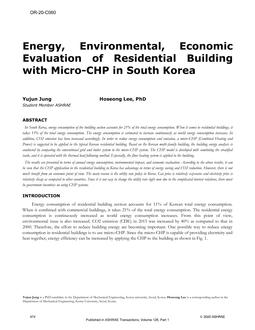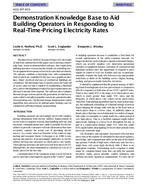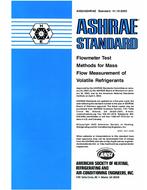Thermal conductivity testing was completed on four different vertical bore hole configurations, each 250 ft (76.2 m) deep with 3/4 in. (1.91 cm) SDR11 polyethylene (PE) pipe and U-tubes. The testing was conducted by adding a monitored amount of heat to 3 gpm (0.1893 L/s) of water over a two-day period for each vertical bore hole configuration. By monitoring the water temperature entering and exiting the loop, the effects of bore hole diameter and backfill material were used to size a ground-coupled heat pump (GCHP) loop heat exchanger. The bore holes had the following average temperatures after 48 hours: 6.5 in. (16.51 cm) diameter with standard bentonite grout, 96.7°F (35.94°C); 6.5 in. (16.51 cm) diameter with fine sand, 82.2°F (27.89°C); 4.75 in. (12.07 cm) diameter with standard bentonite, 91.6°F (33.11°C); 4.75 in. (12.07 cm) diameter with thermally improved bentonite grout, 86.2°F (30.11°C). After determining the thermal conductivity and diffusivity of the soil from the temperature data obtained, a commercially available GCHP software package was used to determine the required vertical loop length. The facility for which this vertical loop was designed, had a peak cooling load of 160 tons (563 kW). The ground area would only support 144 bore holes spaced 17 ft (5.18 m) apart. The bore hole diameter, backfill material, type of pipe, and virgin ground material all affect vertical loop length. For this project, using standard bentonite backfill instead of sand increased the loop length 49%. This equates to 13,680 ft (4170 m) more bore hole. The length of a GCHP loop field can be reduced by using sand or thermally improved bentonite grout instead of standard bentonite grout.
Units: Dual
Citation: Symposium, ASHRAE Transactions, 1998, Vol 104, pt. 1A, San Francisco
Product Details
- Published:
- 1998
- Number of Pages:
- 13
- File Size:
- 1 file , 84 KB
- Product Code(s):
- D-7838


